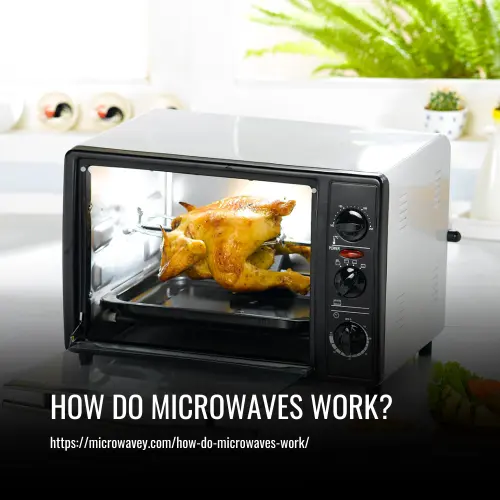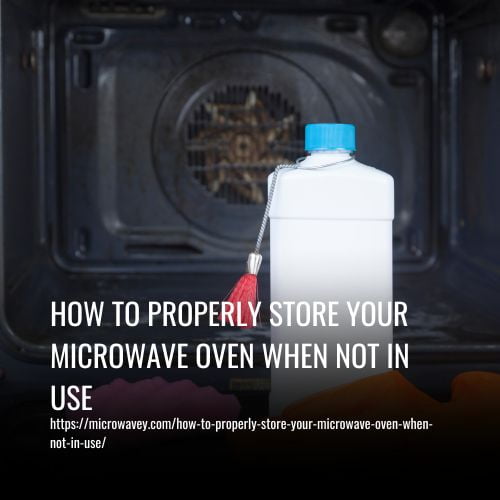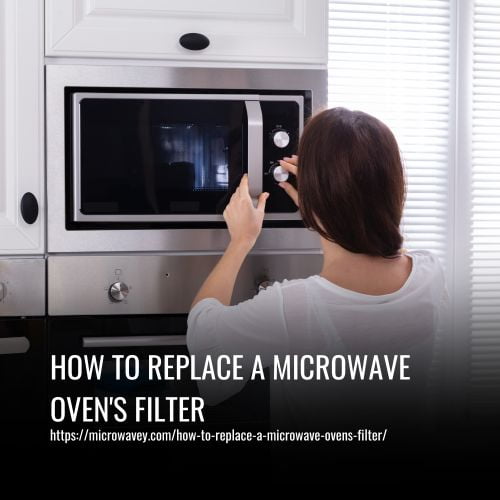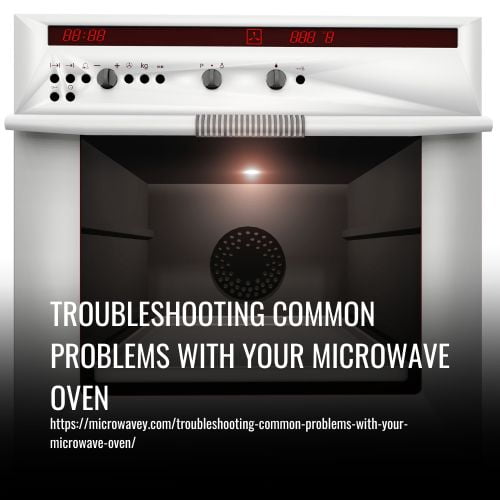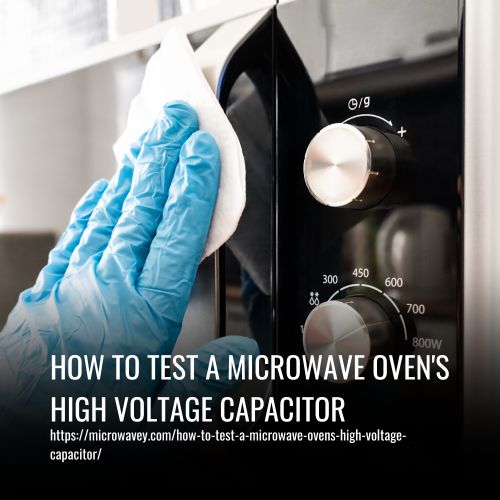How To Test Your Microwave Oven For Safety And Efficiency
As a microwave oven safety and efficiency technician, I’m often asked how to test one’s appliance for proper operation. Testing your microwave oven is an important part of ensuring it continues to provide safe and efficient performance.
In this article, I’ll cover the steps you can take to make sure your microwave oven is running safely and efficiently. From inspecting the door seal to checking its heating elements, I will guide you through each step of testing your microwave so that you can be confident in its performance.
With these simple tips, you’ll know exactly what needs to be done to maintain optimal safety and efficiency from your trusty kitchen device!
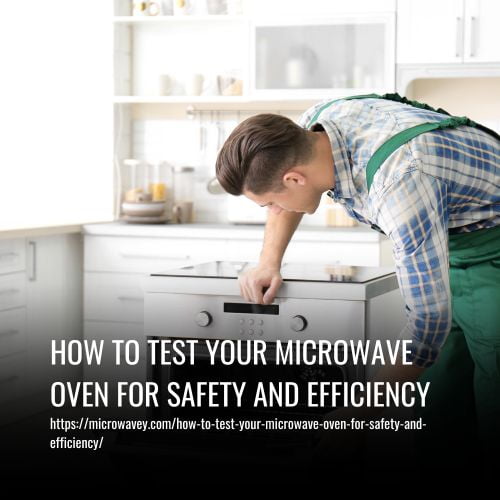
Inspect The Door Seal
As a microwave oven safety and efficiency technician, it’s important to check the seals of your microwave for any signs of wear or damage. This ensures that no heated air can escape from the oven during operation, which is essential for safe cooking.
I always start by inspecting all wiring for any potential problems; if there are any issues with the wiring, then it needs to be replaced before you test the door seal.
Next, I carefully inspect the edges of the door seal itself. If there are worn spots on the seal, they must be fixed in order to ensure proper functioning. Make sure to also look at both sides of the gasket – inside and out – as well as around corners. If anything looks suspicious, replace it immediately.
That way, you can rest assured that your microwave oven will remain efficient and safe when in use.
Check The Ventilation System
Prior to testing the safety and efficiency of your microwave oven, it is important to examine its ventilation system. This should be done with a meticulous eye for detail. To ensure that you get all the necessary steps right, here’s a 3-point checklist:
- Check wiring – make sure no frayed or exposed wires are present in the venting system which could cause an electrical hazard when using the appliance.
- Ensure grounding – check if there is proper grounding of any metal components around the fan motor and other parts of the venting system, ensuring safe operation during use.
- Inspect ducts – look for signs of corrosion or rust on both interior and exterior surfaces of the ducts as this can hinder airflow and reduce efficiency over time.
After running through these criteria, you’ll have peace of mind knowing that your microwave oven’s ventilation system has been inspected properly for safety and performance purposes!
Test The Heating Elements
I’m a microwave oven safety and efficiency technician, and one of the first things I do when testing an oven is to examine its heating elements.
To ensure that everything is working properly, I need to test the wattage levels for accuracy. This involves running tests at different power levels and settings in order to get an accurate reading on how much energy it takes to heat food.
It’s important that the wattage readings are correct so the user can be sure their food will cook evenly and quickly each time they use their microwave.
Aside from examining power levels, I also check all components of the oven like buttons, knobs and other accessories.
All these pieces must work together efficiently so users can have confidence that their appliance is safe and reliable every time they turn it on.
With this comprehensive analysis of all parts involved with heating food in a microwave, customers can rest assured knowing their oven is up-to-date with current safety standards.
Measure Power Usage
Now that we’ve tested the heating elements of your microwave oven for safety, let’s take a look at power usage.
Measuring energy and power savings is an important part of this process to ensure that you are using your microwave oven efficiently.
To do this, I’ll need to use some specialized equipment so I can accurately measure how much wattage your appliance is consuming while it’s in use.
This will help me determine if there are any potential issues with its efficiency or performance.
Once I have completed these tests, I’ll be able to provide you with more information on what needs to be done if anything isn’t up to par.
That way, you can rest assured knowing that your microwave oven is functioning properly and not wasting energy unnecessarily.
Clean The Oven Cavity
I highly recommend avoiding buildup in your microwave oven by cleaning it regularly.
This means wiping down the walls and ceiling of the cavity with a damp cloth, as well as removing any food particles that may have become stuck to them.
Make sure you don’t use too much water or liquid cleaner when doing this – just enough to make the job slightly easier without leaving behind residue.
You should also pay attention to any vents or filters inside the appliance, ensuring they are clear from dust and debris so air can circulate properly.
Regularly clean these parts using compressed air or a vacuum cleaner designed for electronics, if available.
Doing this will help ensure your microwave oven is running safely and efficiently!
Check The Magnetron Tube
As a microwave oven safety and efficiency technician, I’m always on the lookout for any potential issues. This means that when testing a microwave oven, I need to take my time to check every component.
One of the most important components is the magnetron tube – this is what actually generates the microwaves that cook food! To ensure your microwave oven is running at peak performance, here are five ways you can check its magnetron tube:
- Check wattage by using an ohm meter or multimeter.
- Verify power output with a dedicated waveform analyzer.
- Look out for any physical damage to the tube itself.
- Inspect all associated wires and cables connected to it.
- Ensure that proper voltage levels are being supplied.
By following these steps, you’ll be able to identify if there’s anything wrong with your microwave ovens’ magnetron tube so that it operates safely and efficiently!
Test The Timer Controls
Now that we’ve checked the magnetron tube, it’s time to move on and test the timer controls of your microwave oven.
This is where you’ll really start to see if there are any potential safety issues.
First up, testing wattage – this should be done with a multimeter or other device capable of measuring electrical current. Check whether the wattage output matches what’s indicated on the label inside your microwave oven. If not, it could be an indicator that something’s wrong with either the magnetron tube or one of its components such as wiring or insulation.
You may want to call in a professional for further investigation at this point as problems like these can pose serious health and safety risks if left unchecked.
On top of checking wattage, another important factor when assessing timer control efficiency is accuracy – does it match how long you set it for?
To do this, place a cup of cold water inside your appliance and activate the timer for two minutes (or whatever length of time you prefer). Once finished, measure the temperature of the water using a thermometer; it should have increased accordingly depending on the power setting used.
If not then again, perhaps seeking advice from an expert would be wise before using your microwave oven too much just in case there is hidden damage lurking beneath the surface due to faulty wiring or malfunctioning parts!
Examine The Door Switch
As a microwave oven safety and efficiency technician, it’s critical to examine the door switch. This is an important component of keeping your appliance functioning safely and efficiently over its lifetime.
I recently tested a customer’s microwave oven while they were at home. Here are 4 steps I took to check the door switch:
1) Inspected external wiring for signs of wear or damage;
2) Tested insulation on wires using a multimeter;
3) Examined the latch mechanism for proper alignment;
4) Performed voltage tests to ensure that power was transferring correctly.
After completing all these tests, I could confidently tell my customer their microwave oven was safe and efficient!
Ultimately, examining the door switch is just one step in ensuring your appliances remains up-to-date with current safety standards – but it’s an essential part nonetheless. It’s always best practice to review any type of electrical device regularly for potential problems, as this can help prevent bigger issues down the road.
Check The High Voltage Capacitor
First, I’m going to test the capacitor voltage to make sure it’s operating at the correct level for safety and efficiency. Then, I’ll check for any leaks to make sure there are no potential issues with your microwave’s performance.
Test Capacitor Voltage
Hey there! As a microwave oven safety and efficiency technician, one of my jobs is to make sure the high voltage capacitor in your microwave oven is functioning properly.
To do this I need to check the capacitor voltage. This requires me to connect an ohmmeter and then calibrate it for accurate readings. After that, I’ll be checking the polarity of the capacitor’s leads and circuits.
If everything looks good, you won’t have any issues with your unit but if not, we can get it taken care of quickly. So don’t worry – let me handle it!
Check For Leaks
Now that I’ve checked the capacitor’s voltage and polarity, it’s time to move on to checking for leaks.
This is an important step in making sure your microwave oven is functioning properly.
I’ll be using a radiation detector to check for any abnormal levels of electromagnetic radiation coming from the unit.
Additionally, I’m going to inspect all cords connected to the appliance to make sure there aren’t any tears or cracks that could result in hazardous conditions.
So don’t worry – I’m taking extra care with this process!
Measure The Temperature Distribution
After making sure the high voltage capacitor is in good condition, it’s time to move onto measuring the temperature distribution of your microwave oven. This process helps ensure that heat is being distributed evenly so that food can be cooked properly and efficiently.
To begin this process I would suggest analyzing the wattage of different models if you have multiple ones available for testing. Comparing the wattages will help you identify any inconsistencies between them and determine which model may not be working as well as expected.
This step also allows us to test how long it takes each model to cook a certain amount of food at its highest setting, giving us an idea of how efficient they are overall. You should also pay attention to whether or not the microwaves become too hot when running on their maximum setting – if they do, then something maybe wrong with their internal components and needs further investigation.
All these tests combined give us a clear picture into how safe and effective our microwave ovens are functioning before using them in daily life.
Frequently Asked Questions
What Are The Common Causes Of A Microwave Oven Breaking Down?
As a microwave oven safety and efficiency technician, it’s important to understand the common causes of breakdowns.
One cause is cooking temperature – if food is cooked too quickly or at an incorrect setting, this can lead to problems with your appliance.
Another issue that often needs attention is interior cleaning; if not done regularly, dirt and residue can build up in certain parts of the oven which may eventually damage it.
Keeping on top of both these elements will help ensure your microwave oven runs safely and efficiently for years to come!
How Often Should I Check My Microwave Oven For Safety And Efficiency?
As a microwave oven safety and efficiency technician, I recommend that you check your microwave oven for safety and efficiency at least once every six months.
This will ensure that the power levels are within acceptable limits and that food safety is not compromised.
During these checks, it’s important to inspect all components of the appliance including the door seals, interior walls, turntable plate, exterior case, and any other parts.
You should also make sure that the power output settings match what is stated on the product label.
It’s always better to be safe than sorry when it comes to keeping your family safe from potential hazards due to faulty equipment!
How Do I Know If The Magnetron Tube Needs To Be Replaced?
Testing your microwave oven for safety and efficiency is paramount.
Most people don’t realize that it’s important to check the magnetron tube regularly to ensure radiation levels remain safe and consistent.
If you’re unsure of how to go about testing, fear not – as a professional microwave oven safety and efficiency technician, I’m here to help!
By taking certain steps such as inspecting the waveguide cover plate and testing the magnetron tube with an oscilloscope or multimeter, you can determine whether or not it needs replacing.
Remember: staying vigilant when it comes to microwave oven maintenance is essential for keeping your family safe from any potential risks associated with radiation exposure.
How Do I Know If My Microwave Oven Needs To Be Serviced?
When it comes to servicing your microwave oven, checking the symptoms is key.
If you notice any strange odors or sparks coming from within the machine, that’s a good sign that something isn’t right and your appliance needs attention.
It’s also important to practice proper maintenance on a regular basis – such as cleaning out any food particles and inspecting the magnetron tube for damage – in order to ensure its safety and efficiency.
As an experienced technician, I always recommend having a certified repair person take a look at your microwave if you suspect there may be an issue.
Are There Any Safety Precautions I Should Take When Using My Microwave Oven?
When it comes to using your microwave oven, safety should always be the top priority.
As a technician for microwave oven safety and efficiency, I recommend you take the following precautions:
- Ensure that all cooking temperatures are set correctly.
- Avoid direct radiation exposure by standing at least two feet away from the appliance when in use.
- Have regular check-ups done on your oven to make sure it is functioning properly.
By taking these steps, you can help ensure that your microwave remains safe and efficient for years of future use.
Conclusion
As a microwave oven safety and efficiency technician, I can tell you that having an efficient, safe microwave is one of the best investments you can make in your home. The key to getting the most out of your appliance is regular maintenance and testing.
By following these simple steps, you will ensure that your microwave runs smoothly for many years to come.
When it comes to testing your microwave oven for safety and efficiency, nothing beats taking preventative measures. Regularly inspecting your appliance for any signs of damage or wear can save you from costly repairs down the road. Additionally, checking if certain components need replacing such as magnetron tubes will also help keep your appliance running safely and efficiently over time.
Finally, don’t forget about safety when using microwaves! Always follow the manufacturer’s instructions carefully and never use metal containers inside the unit (unless specifically stated otherwise).
With proper care and attention, you can rest assured knowing that your beloved machine will be around for many meals to come!

